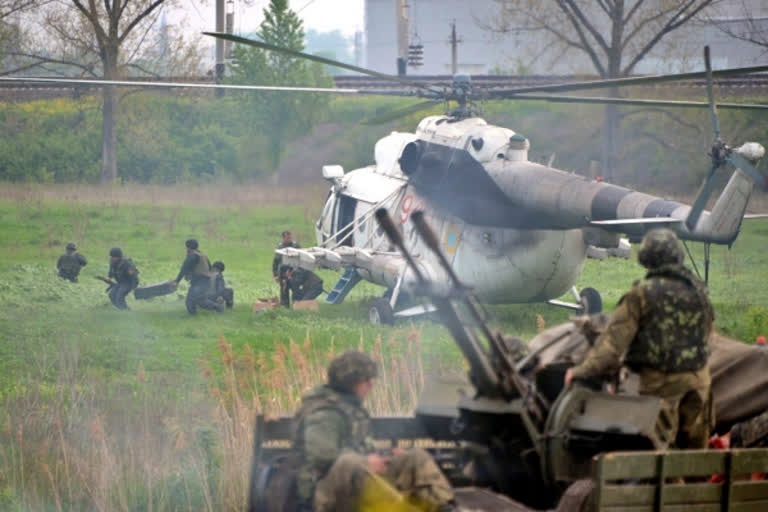New Delhi: In what could have a major impact on war-fighting tactics and military spending on equipment, the Ukraine war—the first major modern land war in years—has thrown up several lessons that would merit a relook at the use and deployment of certain equipment and systems.
Chief among them, besides the slow and lumbering battle tank, is the military attack and transport helicopter. The ongoing war has claimed at least 318 helicopters till now. As of Tuesday, June 28, 2022, the General Staff of the Ukrainian armed forces claim to have downed 185 Russian helicopters.
Lieutenant-General Igor Konashenkov, spokesperson of the Russian Defense Ministry on Tuesday, announced the downing of another Ukrainian military Mi-8 helicopter among other aerial assets. With this, the Russian defence ministry claims to have destroyed 133 helicopters of the Ukrainian Armed Forces besides 218 aircraft which is almost all of the Ukrainian air force. The high toll of these rotary-wing platforms may be due to several factors.
First, helicopters are relatively slow and low-flying aerial platforms with low manoeuvrability capabilities. While anti-aircraft systems have developed fast, the progress of modernization and development of rotary-wing aircraft or helicopters have not been able to keep pace. While Russia has not deployed its most modern military helicopters in a major manner in the ongoing conflict, Ukraine still uses old Russian helicopters.
Second, the conflict zone in Ukraine is crammed with air defence systems with both sides fielding advanced platforms not to speak of the deadly and ubiquitous shoulder-launched MANPADS. In Ukraine, even anti-tank weapons have been used to devastating effect against low-flying helicopters.
Also read:Is the Tank's days over, Ukraine conflict questions
While the Russians have deployed systems line S-200, S-300 and even the powerful S-400, the Ukrainians are actively aided by the US-led NATO. On Monday, US NSA Jake Sullivan announced a plan to supply Ukraine with advanced medium and long range air defence capabilities.
Third, the advent of fully autonomous, weaponised drones and loitering munitions that “search and engage targets” on their own with very less or nil human intervention effectively sounds the death knell for military helicopters.
Fourth, helicopters operate best only in theatres that have been cleared of threats and the skies sanitized with no threat of land-based anti-defence system. This has not been the case in Ukraine. Fifth, the traditional role of a helicopter in a conflict zone is to aid in the transport of material and supplies, a role that can be performed with aplomb by unmanned aerial platforms and drones.
Besides ISR (Intelligence, surveillance and reconnaissance) operations, helicopters are also used to attack ground targets and operate in areas difficult to access. Increasingly, these are domains where drones can be put to good use without putting human lives at risk. These factors combine to question the relevance of helicopters in modern-day warfare while their utility in civilian domains for transport of man and material or for evacuation and supply is seen continuing.



